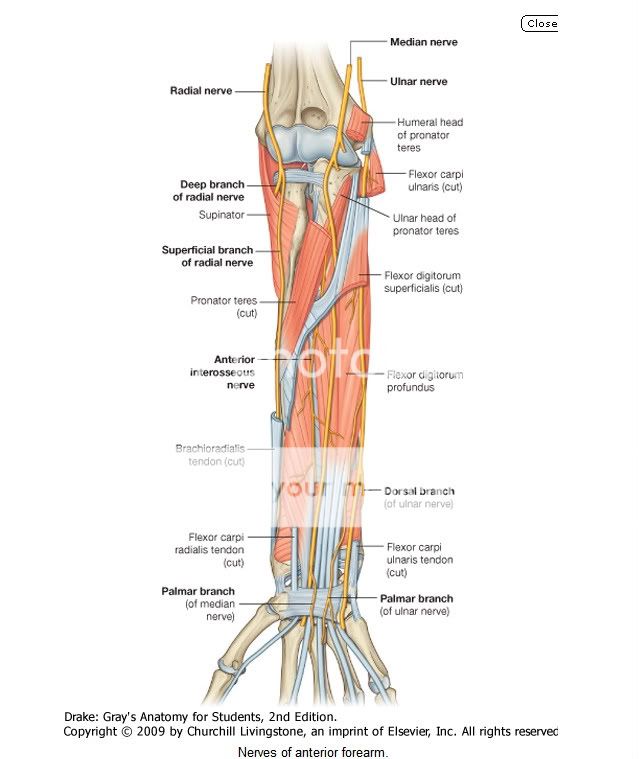Erb's palsy is a common birth injury resulting in paralysis of the upper brachial plexus. It is usually caused by a forcible traction at the neck region during a difficult delivery resulting in stretching of one or both sides of the cervical nerve roots. The shoulder of the baby could get caught and stretched behind the pubic symphysis bone during the strain of childbirth. Once this happen,the brachial plexus can be compressed,stretched or torn. This leaves the child with differing degrees of paralysis to the shoulder, arm or hand.
http://www.dorsetrehab.com/pdf/Erb-s_Palsy.pdf
Is Erb's palsy avoidable?
It can be avoided by having good health care during pregnancy such as:
1.
Blood sugars of mothers with diabetes mellitus or gestational diabetes require vigilant monitoring. They also require good dietary teaching, and tight control of blood sugars through diet or medication administration throughout the pregnancy. We know that high blood sugars "overnourish" the baby and make it gain weight faster than normal, and larger babies are more likely to get stuck in the birth canal.
2.
One option may be to consider an elective cesarean delivery rather than vaginal delivery, but this decision should not be made lightly either, since it also involves risks.
Risk factors that are more likely to result in difficult deliveries and Erb's Palsy:
*
Mothers who have had a prior child with shoulder dystocia, regardless of whether the previous child had a brachial plexus injury
*
Mothers who have had their labor induced or speeded up with drugs like Cervadil, Pitocin, or Cytotec
*
Larger babies, predictably, are born to mother's with diabetes, or gestational diabetes, particularly if the blood sugars have not been carefully monitored and managed
*
Mothers with smaller or unusual shaped pelvises or pelvic openings
*
Larger babies (especially those weighing over 8 1/2 pounds at birth)
*
Prolonged labors
*
Precipitous deliveries
*
Breech position
*
Fetal malposition in the birth canal
Since Erb's palsy is caused by the baby's shoulders being stuck and caught in the pubic symphysis druing vaginal delivery...
there are several techniques and maneuvers to dislodge the stuck shoulder safely. A team of nurses and doctors with current knowledge and skill in the techniques for these deliveries are less likely to deliver an injured baby.
Below is an illustration of maneuvers that nurses and physicians should employ to dislodge the baby when it has gotten stuck. Research demonstrates that rehearsals or drills by the labor team reduce the risk of injuries to the fetus when a true emergency occurs.

http://www.erbspalsyonline.com/
Treatment of Erb's palsyPrimary SurgeryInfants with mild injuries who do not heal by 3 to 4 months of age, or those with more severe injuries (such as avulsions or ruptures), need surgery to improve or correct nerve function. This surgery is best performed by a highly skilled, experienced team and ideally should occur within three to six months after birth. After children turn 1 year old, nerve surgery may not be as successful.
Among the techniques include:
* Neurolysis — clearing scar tissue from the nerve
* Nerve graft — a nerve is transplanted from the infant's leg to reconnect the damaged nerve(s)
* Nerve transfer — sewing an adjacent, functioning nerve or part of a nerve into a nonfunctioning nerve in an attempt to restore function in a paralyzed muscle.
Secondary SurgeryWhen there is less than full recovery, other conditions sometimes develop involving neighboring joints of the arm. These conditions can result in muscle imbalance or shortening of the muscle (contractures). In these cases, other procedures can be performed when the child is older, typically between ages 2 and 10. Possible procedures include:
* Free muscle transfer
* Capsule release
* Tendon transfer
* Correction of the arm (osteotomy)
* Joint fusion
Free muscle transfer-
When an injury causes irreversible atrophy (weakening) of the arm muscles, a new muscle can be transplanted to restore function. The surgical team will move an expendable muscle (such as the gracilis muscle from the thigh) along with its nerve and blood supply, to "reanimate" (restore movement to) the elbow, wrist and hand. Muscle transfers can often stabilize the shoulder and allow lifting of the shoulder, flexing of the elbow and, in some cases, restored function and sensation in the hand.
Tendon transfer-
A procedure where a healthy tendon is taken and moved to replace the function of a diseased or inactive tendon.
Capsule release-
Arthroscopic capsular release is keyhole surgery involving the release of the tight capsule seen in 'frozen shoulder'.
Oateotomy-
A surgical operation whereby a bone is cut to shorten, lengthen, or change its alignment.
Athrodesis(joint fusion)-
A surgical procedure which fuses the bones that form a joint, essentially eliminating the joint. The procedure is commonly referred to as joint fusion.Surgeons implant pins, plates, screws, wires, or rods to position the bones together until they fuse. Bone grafts are sometimes needed if there is significant bone loss. If bone grafting is necessary, bone can be taken from another part of the body or obtained from a bone bank.
http://www.mayoclinic.org/brachial-plexus/erbs-palsy.html



